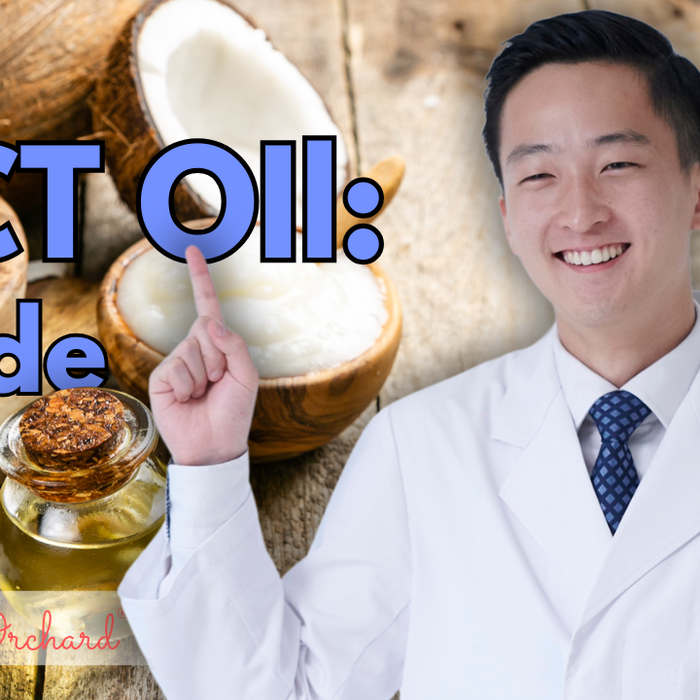

Shilajit: Guide
Key Takeaways
- Shilajit, a Potent Natural Resin for Health: Derived from mountainous regions, it is rich in fulvic acid, trace minerals, and bioactive compounds that promote overall well-being.
- Boosts Energy and Stamina: Shilajit enhances mitochondrial function, making it popular among athletes and those seeking to improve physical performance.
- Supports Brain and Cognitive Function: Its neuroprotective properties help improve memory, focus, and mental clarity while reducing the risk of neurodegenerative conditions.
- Offers Anti-Aging and Immune-Boosting Properties: Shilajit combats oxidative stress, protects cellular health, and strengthens the immune system to enhance vitality and longevity.
- Requires Careful Sourcing for Safety: Authentic, high-quality Shilajit is essential to avoid contamination with heavy metals or impurities, ensuring its safe use.
Shilajit, a unique, tar-like substance formed over centuries from plant and microbial decomposition in mountainous regions, is celebrated for its numerous health benefits. Found predominantly in the Himalayas, Shilajit has been a cornerstone of Ayurvedic medicine for thousands of years. Packed with nutrients such as fulvic acid and trace minerals, it is renowned for enhancing energy, promoting vitality, and supporting cognitive health.
At Health Orchard, we are committed to helping you make informed choices about your health. Understanding Shilajit’s origins, benefits, and risks is crucial before adding it to your wellness routine.

What is Shilajit?
Shilajit is a natural, tar-like resin that forms over centuries through the decomposition of plant and microbial matter in high-altitude, rocky environments. Found primarily in the Himalayas, Altai, Caucasus, and other mountainous regions, it emerges from rock crevices during warm weather, oozing as a dark-brown or black resin. The unique environmental conditions, including extreme pressure and fluctuating temperatures, contribute to its mineral-rich composition and potent bioactive properties. For centuries, Shilajit has been a cornerstone of Ayurvedic and traditional medicine systems, revered for its ability to enhance vitality and treat various ailments.
The harvesting process involves collecting the resin directly from rocks, often through labor-intensive methods performed by local communities. Once gathered, Shilajit undergoes a purification process to remove impurities like dirt and debris, ensuring it is suitable for human consumption. This purification typically involves dissolving the raw resin in water, filtering out contaminants, and evaporating the water to produce a pure, concentrated form. Pure Shilajit is sticky, aromatic, and nutrient-dense, making it one of nature's most unique health-promoting substances.
Key Components
Shilajit owes its health benefits to its rich composition, which includes several critical compounds:
- Fulvic Acid: This is the most abundant and potent compound in Shilajit, comprising up to 60% of its weight. Fulvic acid acts as a powerful antioxidant, neutralizing free radicals and reducing oxidative stress. It also enhances nutrient absorption at the cellular level, ensuring that vitamins and minerals are more effectively utilized by the body.
- Trace Minerals: Shilajit contains over 80 trace minerals, including iron, magnesium, zinc, and calcium, all of which are essential for supporting key physiological functions like metabolism, bone health, and energy production. These minerals are present in ionic forms, which are more bioavailable than those found in many dietary sources.
- Bioactive Compounds: Alongside fulvic acid and minerals, Shilajit is rich in dibenzo-alpha-pyrones and other bioactive compounds that promote cellular regeneration and protect against aging and inflammation. These compounds also have adaptogenic properties, helping the body manage stress and maintain balance.
The synergy between these components makes Shilajit a potent natural remedy with diverse applications. Its ability to deliver concentrated nutrition in a highly bioavailable form sets it apart from other supplements, and its historical use underscores its safety and effectiveness when consumed responsibly.
Health Benefits of Shilajit
Energy and Stamina
Shilajit is widely celebrated for its ability to boost energy levels and enhance stamina, thanks to its impact on mitochondrial function. Mitochondria, often referred to as the powerhouses of cells, produce ATP (adenosine triphosphate), the body’s primary energy currency. Shilajit’s fulvic acid content facilitates the transport of essential nutrients into cells, optimizing mitochondrial activity and improving overall energy production. This natural energy boost makes it a popular choice among athletes and fitness enthusiasts seeking improved performance and quicker recovery times.
Beyond athletic benefits, Shilajit helps combat fatigue caused by chronic conditions, stress, or aging. Its adaptogenic properties assist the body in managing physical and mental stress, allowing users to sustain energy levels throughout the day. Regular consumption has been associated with increased stamina, endurance, and reduced symptoms of exhaustion, making it valuable for those with demanding lifestyles or who struggle with energy dips.
Cognitive Enhancement
Shilajit supports brain health and cognitive function through its neuroprotective properties. Fulvic acid, one of its primary components, helps reduce oxidative stress in the brain and promotes the removal of harmful proteins, such as tau proteins, which can accumulate and lead to neurodegenerative conditions like Alzheimer’s disease. Studies have shown that Shilajit may enhance memory retention, improve focus, and support overall mental clarity, making it a potential tool for maintaining cognitive vitality as individuals age.
Additionally, Shilajit’s impact on dopamine levels in the brain contributes to better mood regulation and reduced anxiety. By supporting the nervous system and protecting against neuroinflammation, it can help combat cognitive decline and support sharper mental acuity. Its role in enhancing nutrient absorption also ensures that the brain receives the minerals and vitamins it needs to function optimally, further contributing to its reputation as a brain booster.
Anti-Aging Properties
The anti-aging properties of Shilajit are rooted in its ability to combat oxidative stress and protect cellular integrity. Free radicals, unstable molecules that can damage cells and accelerate aging, are effectively neutralized by the antioxidants in Shilajit, including fulvic acid. This helps reduce the signs of aging, such as wrinkles, fine lines, and reduced skin elasticity, while promoting a youthful appearance.
Shilajit also supports collagen production, which is essential for maintaining skin firmness and joint health. Its cellular rejuvenation properties extend to promoting healthy organ function, reducing inflammation, and improving physical resilience, making it a comprehensive anti-aging aid. By protecting DNA from damage and supporting the repair of cellular damage, Shilajit helps to slow the aging process at a molecular level.
Immune Support
Shilajit plays a crucial role in bolstering the immune system by supporting the production and activity of white blood cells, the body’s primary defense against infections. The resin’s rich mineral and antioxidant profile enhances immune cell function, allowing the body to respond effectively to pathogens and recover more quickly from illnesses. Its anti-inflammatory properties also help reduce chronic inflammation, which can otherwise weaken immune responses.
Another significant aspect of Shilajit’s immune-boosting ability is its role in gut health. Since a large portion of the immune system resides in the gut, Shilajit’s fulvic acid enhances nutrient absorption and promotes a healthy gut microbiome, indirectly strengthening immune resilience. Regular use can help the body maintain a strong, balanced immune system, even during periods of stress or seasonal changes.
Common Uses and Applications
Shilajit is available in several forms, including resin, powder, and capsules. Here’s how it’s commonly consumed:
- Resin: The most traditional form of Shilajit comes as a sticky, tar-like substance that preserves its natural compounds in their most potent state. This form allows for the most authentic experience and can be easily dissolved in warm liquids for optimal absorption.
- Capsules: Modern encapsulation technology helps preserve the active compounds while providing precise dosing that eliminates guesswork. The convenience of capsules makes them ideal for busy lifestyles and travel, while still maintaining the potency of traditional forms.
- Powder: This versatile form offers excellent mixability and can be seamlessly incorporated into various beverages and food items. The powder form allows for flexible dosing and creative applications while maintaining the full spectrum of beneficial compounds.
Recommended Dosage
The typical dose ranges from 300 to 500 milligrams daily, though individual needs may vary based on factors like body weight, health status, and specific wellness goals. Starting with a lower dose allows the body to adjust gradually and helps identify optimal personal dosing levels. Consulting with healthcare professionals ensures safe and effective dosing strategies tailored to individual circumstances.
Pairing With Other Supplements
Shilajit demonstrates remarkable synergistic effects when combined with other traditional Ayurvedic herbs, particularly enhancing the benefits of adaptogenic compounds. The combination with ashwagandha can significantly boost stress resilience and energy levels, while pairing with turmeric may enhance its anti-inflammatory properties. These strategic combinations can create more comprehensive wellness protocols that address multiple health aspects simultaneously.
Risks and Precautions
Potential Side Effects
- Digestive Issues: Initial supplementation may cause temporary gastric adjustment periods that typically resolve within a few days of consistent use. Understanding these temporary effects helps users persist through the adaptation phase while their bodies acclimate to the supplement's rich mineral content.
- Allergic Reactions: While rare, some individuals may experience allergic responses ranging from mild skin irritations to more serious systemic reactions. Careful monitoring during initial usage periods and immediate discontinuation upon any adverse reactions ensures user safety and allows for proper medical intervention if needed.
Sourcing Matters
The quality and safety of Shilajit products can vary significantly based on sourcing methods, processing techniques, and quality control measures. Contamination risks are particularly concerning with unverified sources, as improper extraction methods can concentrate harmful substances. Professional laboratory testing and certification provide essential safeguards against these potential hazards.
Who Should Avoid Shilajit?
- Pregnancy and Nursing: Due to limited research on fetal and infant safety, pregnant and breastfeeding individuals should err on the side of caution and avoid Shilajit supplementation. The complex mineral composition and potential biological effects warrant particular care during these sensitive periods.
- Medical Conditions: People with iron-related disorders or conditions affecting mineral metabolism should exercise extreme caution or avoid Shilajit entirely. These conditions can be exacerbated by Shilajit's high mineral content and its effects on metabolic processes.
- Medication Interactions: Individuals taking blood thinners, diabetes medications, or other prescribed treatments should consult healthcare providers before starting Shilajit. The supplement's active compounds may interact with various medications, potentially affecting their efficacy or safety profiles.
How to Identify Authentic Shilajit
Characteristics of High-Quality Shilajit
- Color and Texture Analysis: Pure Shilajit exhibits a distinctive dark color spectrum ranging from deep brown to black, with a characteristic sticky consistency that responds to temperature changes. The texture should be uniform throughout, without any grainy patches or inconsistencies that might indicate adulteration.
- Solubility Testing: Genuine Shilajit demonstrates complete water solubility when properly prepared, creating a uniform solution without settling or separation. This characteristic serves as a reliable indicator of purity and proper processing methods, while also confirming the absence of common adulterants.
Red Flags to Avoid
The presence of artificial fragrances or chemical odors strongly indicates adulteration or synthetic manufacturing processes that compromise product authenticity. Proper documentation and transparency in ingredient sourcing and processing methods are essential markers of legitimate products. The absence of third-party testing or quality certifications should raise serious concerns about product authenticity and safety.
Best Practices
Establishing relationships with reputable suppliers who maintain consistent quality standards and provide comprehensive product documentation ensures access to authentic Shilajit. Regular verification of certification and testing results helps maintain confidence in product quality and safety. Staying informed about industry standards and best practices helps consumers make educated decisions about their Shilajit purchases.
Shilajit in Modern Wellness Trends
Shilajit has emerged as a significant player in contemporary wellness, capturing the attention of those seeking natural remedies and holistic health approaches. This ancient resin has gained recognition worldwide as a powerful superfood, praised for its potential to boost energy levels, enhance mental clarity, and support overall vitality in ways that align with modern health priorities.
Health-conscious individuals, from busy professionals to dedicated fitness enthusiasts and wellness practitioners, are increasingly incorporating Shilajit into their daily routines. Its versatility as a supplement complements various lifestyle approaches, from active training regimens to mindful wellness practices, making it a valuable addition to those seeking natural ways to optimize their health and performance.
Conclusion
Shilajit stands as a remarkable natural supplement, backed by both centuries of traditional medicine and emerging scientific research. When sourced from reputable suppliers and used according to guidelines, this powerful adaptogen offers numerous benefits, from enhanced energy and cognitive function to improved overall wellness, making it a valuable addition to a healthy lifestyle.
Health Orchard simplifies your wellness journey by connecting you with premium Shilajit products from trusted retailers like Amazon, iHerb, and Walmart. Our platform empowers you to compare prices, read authentic reviews, and make informed decisions about your Shilajit purchase, ensuring you can confidently select a high-quality product that aligns with your health goals and safety standards.
Frequently Asked Questions about Shilajit
1. What is shilajit mainly used for?
Shilajit is primarily used for enhancing energy, improving testosterone levels, and boosting cognitive function. It's traditionally used for anti-aging, fertility enhancement, and immune system support. The compound contains fulvic acid and various minerals that support cellular energy production and overall vitality.
2. What happens if we take shilajit daily?
Daily shilajit use may increase energy levels, improve mental clarity, enhance physical performance, and support hormone balance. Regular users often report better stamina, improved stress resistance, and enhanced immune function. Benefits typically develop over 2-3 weeks of consistent use.
3. Why is shilajit so powerful?
Shilajit's power comes from its rich mineral content, high fulvic acid concentration, and unique bioactive compounds. It contains over 84 minerals in ionic form, making them highly bioavailable. Its adaptogenic properties help balance body systems and enhance cellular energy production.
4. Who should not use shilajit?
Pregnant women, nursing mothers, children under 18, and those with sickle cell anemia should avoid shilajit. Not recommended for people with gout, hemochromatosis, or active infections. Those with diabetes or blood pressure issues should consult healthcare providers first.
5. Is Shilajit bad for the kidneys?
While generally safe for healthy kidneys, those with kidney disease should avoid shilajit. Its high mineral content may affect kidney function in sensitive individuals. Consult healthcare providers if you have kidney concerns or are taking medications.
6. Is Shilajit bad for the liver?
Research suggests shilajit is generally safe for healthy livers and may offer protective benefits. However, those with liver conditions should exercise caution. Quality matters significantly - contaminated products may cause liver stress. Use only purified, tested sources.
7. What is the negative effect of shilajit?
Common side effects include digestive upset, iron overload in susceptible individuals, and allergic reactions. Some users experience increased heart rate, anxiety, or insomnia. Low-quality products may contain heavy metals or contaminants. Always source from reputable suppliers.
8. What is the best time to take shilajit?
Morning consumption on an empty stomach is typically recommended, about 30 minutes before breakfast. Take with warm water or milk for optimal absorption. If using twice daily, space doses 8-12 hours apart. Avoid taking late in the day.
9. Is shilajit safe to take with other medications?
Exercise caution when combining shilajit with medications, particularly blood thinners, diabetes drugs, or blood pressure medications. It may affect drug absorption and metabolism. Always consult healthcare providers about potential interactions before combining with medications.
10. How many vitamins are there in shilajit?
Shilajit contains multiple vitamins, including vitamin B1, vitamin B2, vitamin B6, vitamin B12, vitamin C, and vitamin E, though concentrations vary. More significantly, it provides over 84 minerals, fulvic acid, humic acid, and other bioactive compounds. The mineral content is typically more notable than vitamin content.
References
- Healthline, “9 Benefits of Shilajit”, February 2024.
- Health, “8 Health Benefits of Shilajit”, October 2024.
- MedicalNewsToday, “Shilajit: 8 benefits and how to use”, May 2024.
- Verywell Health, “Shilajit: 6 Benefits, Side Effects, and Uses”, April 2024.
- International Journal of Alzheimer’s Disease, “Shilajit: A Natural Phytocomplex with Potential Procognitive Activity”, February 2012.
- MedicineNet, “What Does Shilajit Do for the Body?”, August 2024.
- Journal of the International Society of Sports Nutrition, “The effects of Shilajit supplementation on fatigue-induced decreases in muscular strength and serum hydroxyproline levels”, February 2019.
- Andrologia, “Clinical evaluation of purified Shilajit on testosterone levels in healthy volunteers”, September 2015.
- Chinese Medicine, “Mechanisms of generation and exudation of Tibetan medicine Shilajit (Zhaxun)”, June 2020.
- Journal of Orthopaedic Surgery and Research, “Accelerating effect of Shilajit on osteogenic property of adipose-derived mesenchymal stem cells (ASCs)”, September 2022.







